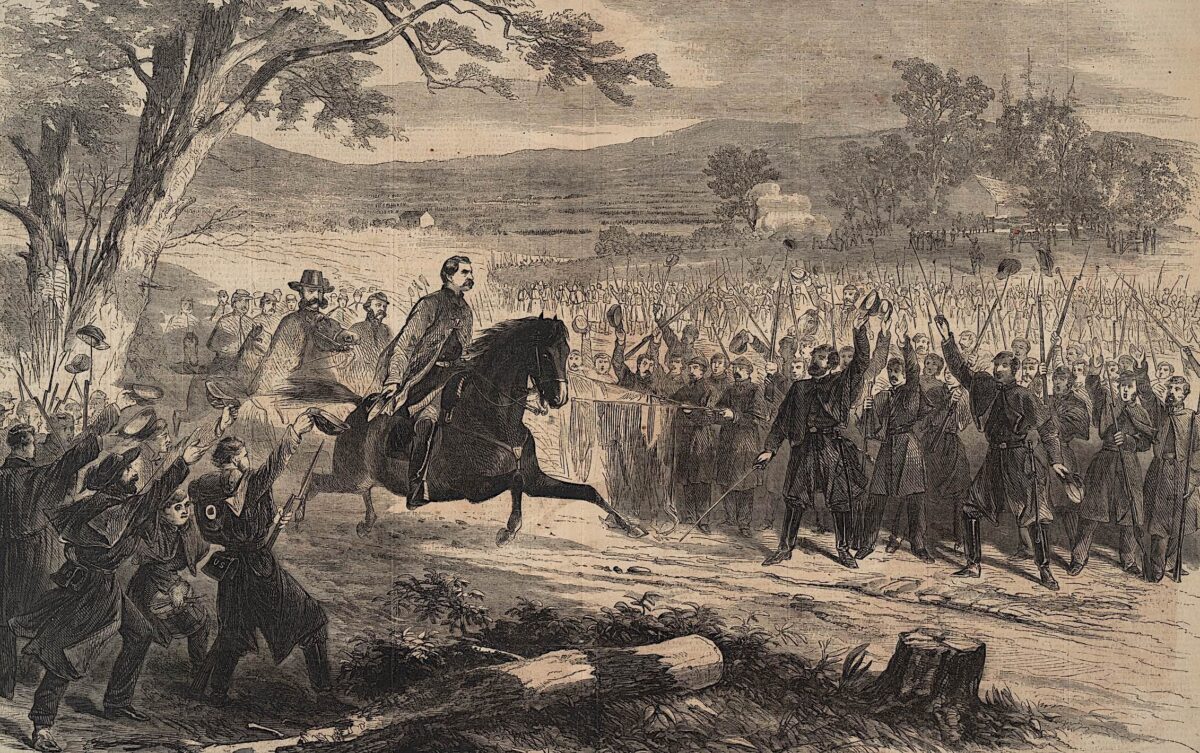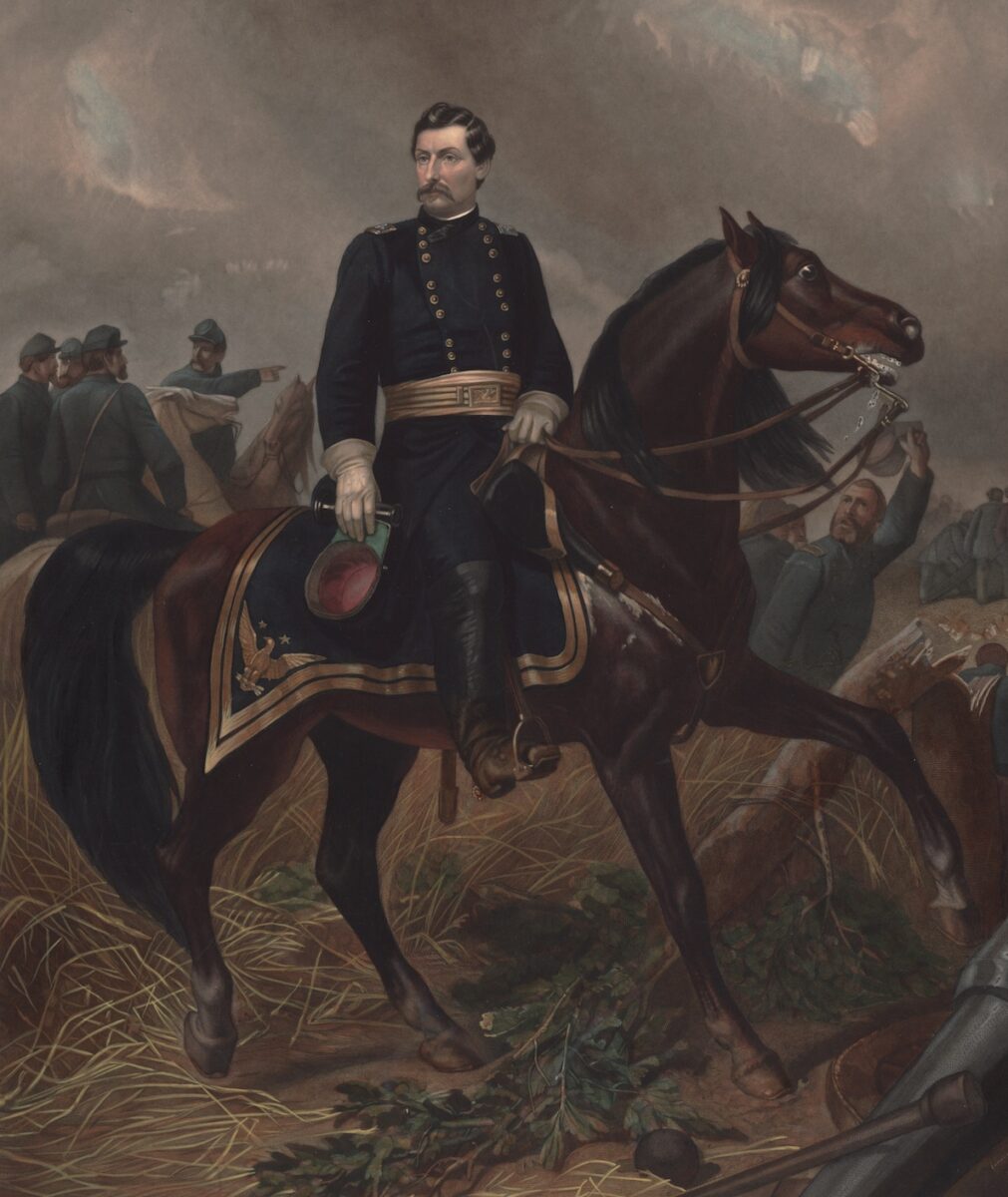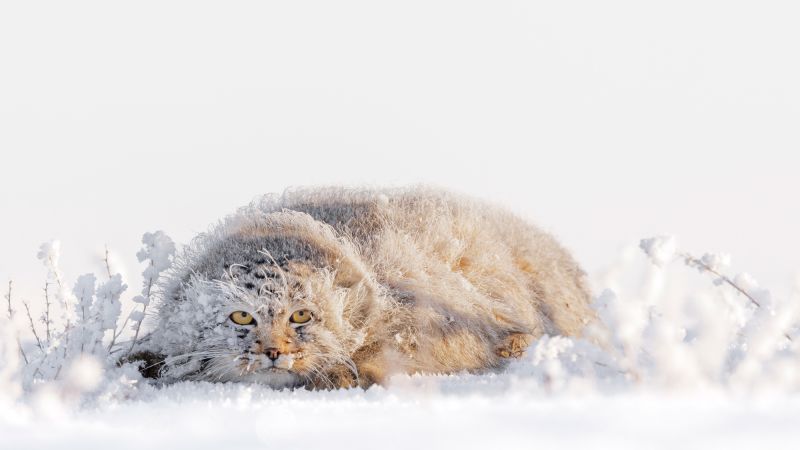 Harper's Weekly
Harper's WeeklyGeorge B. McClellan is depicted riding “Handsome Dan” through a Union army camp in an illustration from 1862.
In its October 26, 1861, issue, The Scientific American reprinted an article profiling the horse ridden by George B. McClellan. A West Point graduate and Mexican War veteran, McClellan had risen quickly through the Union army ranks after the outbreak of the Civil War; in May 1861, at 34, he was commissioned major general in the regular army and given command of the Department of the Ohio. As the article (reproduced in full below) suggests, McClellan’s horse—named “Daniel Webster” after the great American statesman, but also known as “Handsome Dan”—was worthy of the man soon to be promoted to general-in-chief of all Union armies. McClellan himself later wrote, “Dan was the best horse I ever had. He was never ill for an hour, never fatigued, never disturbed under fire.”
 Anne SK Brown Military Collection
Anne SK Brown Military CollectionGeorge B. McClellan and his horse “Daniel Webster,” aka “Handsome Dan.”
Gen. McClellan’s War Horse, “Handsome Dan.”
We find in Porter’s Spirit of the Times the following description of this celebrated horse, formerly owned bn H.C. Creveling, of St. Louis, and presented to Gen. McClellan by several gentlemen of Cincinnati—reported to be worth over one thousand dollars. He is a gelding, of a beautifully-dappled mahogany-bay color, with three white feet and a star, very heavy flowing black mane and tail—the latter a regular “spout.” He is sixteen hands high, and weight, in ordinary flesh, 1,260 lbs. He was sired by Gen. Jackson, dam of Sir Archy and Messenger. He sas a fine, bony, intelligent head, delicately-tapered ear, and a proud, beautifully-arched neck, capital shoulders, very long and muscular hams, whose symmetry could not be improved were they carved in order; his chest is broad and deep, his legs fine, flat, and bony, with his hocks and knees well down to his heels, and his fetlocks almost to the ground, with a round, well ribbed “barrel” of tremendous length, and loins and hips remarkable for strength and beauty. Indeed, his fine points and evenly-balanced proportions make him, in the fullest sense of the term, a model horse, not only for symmetry, but for speed and stoutness. As a field horse he has no superior, being very “topy” when in action, with a proud and nervous step, his head as high as his rider’s when mounted, and his throat-latch and tips of his fore feet almost on a perpendicular line when in repose.
He possesses many singular characteristics common to no other one of his species; For instance, he will not stamp his feet to shake off a fly if there were a thousand of him, seeming to entertain a feeling of contempt for all lesser animals; and his confidence in, and affection for, the human species is such that he will not, under any circumstances, suffer his attention to be distracted from his master by any minor object. To his own species he pays no attention, passing among them without deigning them the slightest notice, not even when turned loose in the same yard or field. He will follow his master up any flight of stairs, or along any precipice where he can get a foothold, relying on his master’s judgment for his safety; he will stand anywhere he is left without constraint, and is as brave as a lion, and as discreet as a judge.
In speaking of this horse, Willis says, “he is afraid of nothing.” The proof of it was in the fact that (beside all the cannonading and trumpeting) he stood for a half hour, during the latter part of the review, with the large and showy flag, which indicated the commanding officer’s position on the field, flaring directly across his eyes and touching his muzzle at every puff of the wind, without flinching an inch. Every other horse, cavalry and artillery, shied in passing this showy object. The immovableness of McClellan’s horse, standing nearest to it, was remarked by all around me. I venture to promise (after considerable study of him), that the honest and brave chestnut sorrel, as long as he has life in him, on the battle field, will do well by his rider.
The post Handsome Dan appeared first on Civil War Monitor.
.png)









 English (US) ·
English (US) ·